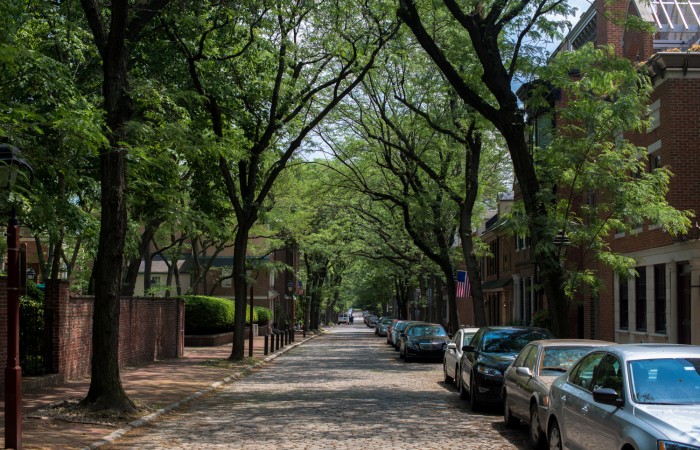
Shaping the Story of a City
By Kim Palagyi
Cities tell their living story every day, evident alone through architecture, food, and local flair. These stories inhabit the streets and are carried with the people who walk them. Cities tell “stories [that] manipulate time, voice, and space,” according to University of Iowa Professor Barbara Eckstein, to create compelling communities. The monumental capacity a city has to ignite change resides in its story, the words of its people that will disseminate around the world.
Even Woden’s own home of Philadelphia can create a more vibrant city by crafting a better story — one that uses technology to celebrate human creativity and innovation.
For instance, Austin’s South by Southwest festival allows new ideas and culture to converge, furthering the city’s own reputation for innovation and creativity. SXSW, though started by just a few individuals, now is a key narrative in the story of Austin. Today, more than 30,000 people annually travel to Austin to take part in the festival.
Started in 1994, SXSW’s significant turning point was in 2007 when Twitter, though officially launched nine months earlier, was debuted. Twitter’s immediate success was in part due to SXSW’s platform that had been cultivated for years. The controversy surrounding SXSW’s pull of their GamerGate conference is a reminder of just how influential their narrative is, and how important their responsibility is to rectify their actions.
Though SXSW is just one part of Austin’s story, it helps inform its success in the modern marketplace and encourages cities everywhere to diversify their industry with platforms that foster innovation.
Beyond the separate actors who inform a city’s story are the everyday stories that move from the bottom up. How people physically use and move through the space informs a culture’s values and thus a city’s story. In the 1960s Jane Jacobs championed the necessity of livable streets to allow for human interaction to flourish. One of the largest contemporary initiatives that promotes human interaction is bike share programs. Though bicycling is not new to cities like Amsterdam and Copenhagen, bike sharing offers a different way to both use and interact with an urban space. Biking allows for open interaction with the streets, the ability to dismount at any time, and the opportunity to “park” anywhere. And commuters who bike are associated with higher levels of happiness. Unlike cars, which destroy pedestrian life, bikes have the opportunity to change the way we use and see cities, ultimately changing the story of city life. Philadelphia bike program Indego is already having an impact and is influencing how commuters and tourists use the city to create their own stories.
Yet the influence of technology will fundamentally change how cities fit our lives. A report released by Navigant Research projects investment in smart city technologies is expected to exceed $174 billion from 2014 to 2023. Smart city features can work to improve public safety and optimize efficiency. For instance, BigBelly is a smart waste management solution that enables cities to collect garbage with bins that have sensors and solar-powered trash compactors. Philadelphia is already home to BigBelly, and though the bins are disliked for their filthy handles, pedal-operated trashcans are their intended replacement.
City stories are created by their people, and fostered by their leaders, whether political, business, or community. Individuals inspire new ideas to take hold and transform a city’s reputation and influence. Just as SXSW informs Austin’s ability to inspire culture consumers, Philadelphia’s ability to develop a commitment to innovation will help shape its story in a profoundly positive way.
Kim Palagyi is an intern at Woden. Whatever your storytelling needs may be, let Woden help. Download our free StoryGuide, or send us an email at connect@wodenworks.com to discuss how we can help tell your story.


